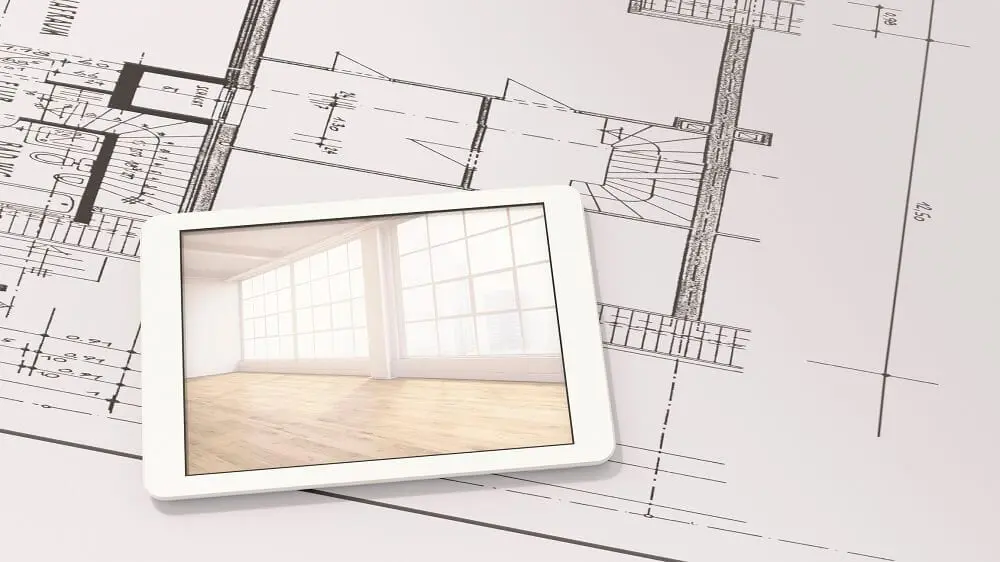
We live in a world of beeps and buzzes that wake us up, tell us when the coffee’s ready, alert us when we’re veering into traffic, remind of us a conference call, and tell us when it’s time to pick up our kids from school. Whether you want more automated alerts in your life or wish you could turn a few off, one alert system you don’t want to overlook is home sensors. Sensors in your home can notify you of some important issues such as a water leak, poor air quality, or an electrical system on overload.
“We’ve been installing home sensors for the past five or six years, initially just for water leaks and energy management,” says Jacob Atalla, vice president of sustainability initiatives for KB Home. “They’re an emerging trend now and can be extended to include things that help people live in a healthier home.”
While sensors for water leaks have been around for years, technological improvements have improved their reliability and the way consumers get information from the sensors, says Ian Bryant, senior director of technology application and innovation for CEDIA, a global authority on home technology.
“The technology is getting cooler. Now you can wire these sensors into your security system or network so you can get emails or other alerts about what’s happening in your home,” says Bryant. Even more important, says Atalla, is the technology that goes beyond providing information. “Now there are systems that actually do things on our behalf, such as cleaning the air or shutting off the water,” says Atalla. “This is part of the transition from a smart home to a smarter home.”
Energy Monitoring
KB Home uses the Wiser Energy system in some of their homes, which measures energy use in real time. “Homeowners can know how much electricity they’re using and how much they’re spending to do a load of laundry, run the dishwasher, or keep the lights on,” says Atalla.
Adding an electrical monitor to your house can be as simple as putting a $200 clamp on your main electrical line and a couple of appliances, says Bryant.
“New technology that is being developed will let you check your electrical use the way you check your battery on a smartphone to see what’s using the most power,” he says. “If you see that your air conditioning is consuming a lot of power, then you can get maintenance done or change how you use it.”
Preventing Water Damage
Considering how expensive water damages can be, it’s no surprise that they’re a major concern among homebuyers, or that there is technology available to help manage them.
“Water leak sensors are pretty inexpensive, so it’s recommended to install them next to a basement sump pump because of a possible malfunction, and near a water heater and floor drain,” says Bryant. “They’re typically not installed in kitchens and bathrooms because the devices need to be on the floor and plugged in, so they can be hard to hide in those rooms.”
Bryant says water leak detectors are usually installed in vacation homes or in homes owned by people who travel often because accumulating water can cause major damage. “There are also more expensive systems that include shut-off valves that can be programmed to trigger an automatic water shut-off if it senses a specific issue,” says Bryant.
KB Home uses the Phyn water sensor in many of their homes, which can be connected to the main water pipe for continuous monitoring.
“Whether there’s a consistent small flow, such as a slow leak, or a larger issue, the system can send a note to the customer,” says Atalla. “The sensor is great for emergencies but is also can help change consumer behavior, so they’ll adjust consumption according to their lifestyle.”
Light & Air Improvements
Smoke detectors and carbon monoxide detectors are required in newly built homes in most states. New detectors connect with the rest of a home automation system so that homeowners receive notifications on their apps as well as an audible alert when they’re home, says Bryant. But new technology demonstrated at KB Home’s ProjeKt Home earlier this year takes these traditional detectors a step further with indoor air quality sensors.
“The sensor is tripped by things like hair spray or cooking with a lot of oil,” says Atalla. “So, for example, if the air quality isn’t good in the master bathroom because of hair spray, the sensor communicates with the air conditioning system to recirculate the bathroom air with high-efficiency filters.”
Another new technology demonstrated at the ProjeKt house was synchronized lighting
“Studies have shown that lighting can have a big health impact on people,” says Atalla. “You want the light to match the brightness of natural light outside because this can help people have better circadian rhythm. For instance, at sunset you want the lights to be dimmer to produce relaxation in people.”
Moving Forward
Both the indoor air quality sensor and circadian rhythm lighting system, which is calibrated with the geographical location of a home and an astronomical clock, will be available as options at some of KB Home’s communities. “Depending on consumer reactions, these could become standard features in the future,” says Atalla.
As for the future, Atalla says he’s following innovations that can make it easier to update homes with new sensors and for consumers to operate them.
“So many things are being researched, including sensors related to foundation movements and to listen to faint sounds inside the walls that could indicate hidden insects or rodents,” says Atalla. “We’re also interested in sensors in bathroom floors that could indicate someone has slipped and fallen. The sensor could be programmed to text an emergency contact or next of kin to check up on someone.”
With the research on sensors for wellness and safety continuing to expand, Atalla says that eventually smart homes will become “thinking homes.”

Michele Lerner is an award-winning freelance writer, editor and author who has been writing about real estate, personal finance and business topics for more than two decades.
 Condo & Townhome HOAs: How to Find Them, and What to Look For
Condo & Townhome HOAs: How to Find Them, and What to Look For